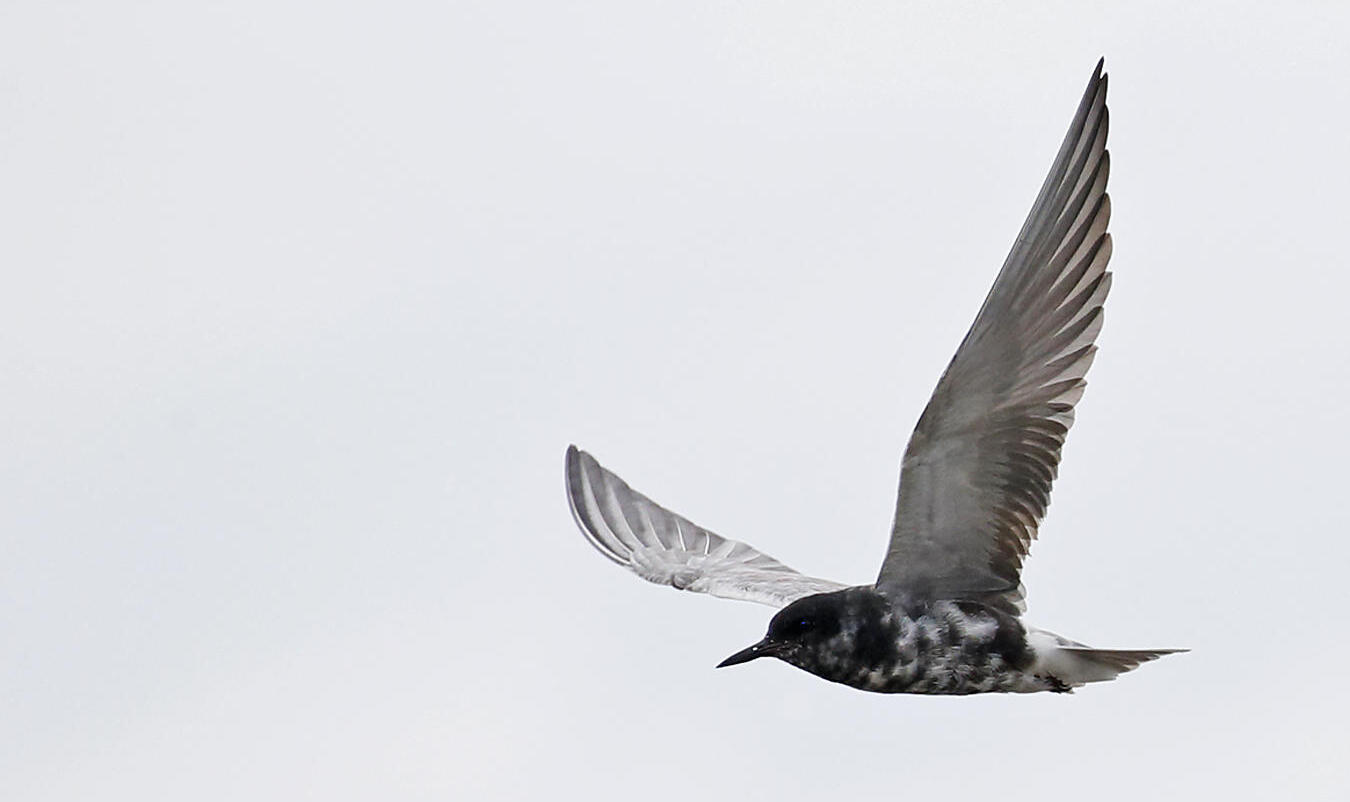Facing population declines up to 99% over the past 54 years according to Breeding Bird Survey data, Black Terns (Chlidonias niger) have an uncertain future in the Great Lakes region. Audubon Great Lakes is working to ensure our Great Lakes coastal areas play an important role in safeguarding critical breeding grounds for these elegant and distinctive terns.
Thanks to strong partnerships across Michigan, Illinois and Wisconsin, we are learning more about the factors driving the decline of the Black Tern and investing in the protection of its breeding grounds. Audubon has launched restoration projects at two major breeding sites in Michigan: St. Clair Flats State Wildlife Area and Wigwam Bay State Wildlife Area. These two colonies are suffering from habitat degradation due to invasive plants, loss of floating nest mats, severe weather events, and changing water levels. The habitat work led by Audubon Great Lakes aims to improve hemi-marsh conditions and combat invasive species.
Black Tern nest monitoring, banding, and NanoTagging is also ongoing at these two colonies and the data is being used to develop an integrated population model which should help determine the drivers of the population decline. For example, are adults surviving long enough to return to the breeding grounds, or are not enough young being produced and fledging successfully from the breeding grounds? Identifying where in the life cycle Black Terns are experiencing declines will better inform management and conservation efforts in Michigan, but also along their migratory pathways and wintering grounds.
Additionally, Audubon has expanded monitoring efforts across Michigan with the help of partners and dozens of volunteers to help fill important knowledge gaps about historic Black Tern colonies. The hope is that surveyors will be able to determine whether colonies are still active and if the habitat is still suitable for Black Terns. Furthering the science that allows us to better understand why we are seeing such dramatic declines in Black Tern populations and investing in the conservation of important breeding areas of these graceful birds, will help ensure a viable future for the Black Tern.
Learn more about this work in Audubon's 2025 Black Tern Conservation Action Plan and Restoring Michigan's Black Tern Population Story Map
Audubon's Black Tern Conservation project is made possible thanks to the tremendous dedication of several partners and volunteers that have been part of the project since 2013:
- U.S. Fish and Wildlife Service
- Detroit Audubon
- Michigan Department of Natural Resources
- Detroit Zoological Society
- U.S. Fish and Wildlife Service Coastal Program
- University of Michigan
- Indiana University
- Lake Superior State University
- Environment and Climate Change Canada
- Sault Tribe of the Chippewa Indians
- Common Coast Research and Conservation
- Upper Mississippi Great Lakes Joint Venture
- Kalamazoo Nature Center
- Dozens of Audubon Great Lakes volunteers!
Ways You Can Help
Join A Chapter
Audubon chapters create a culture of conservation in local communities through education and advocacy, focusing on the conservation of birds and conservation of important habitats.
Donate to Audubon
Help secure the future for birds at risk from climate change, habitat loss and other threats. Your support will power our science, education, advocacy and on-the-ground conservation efforts.





